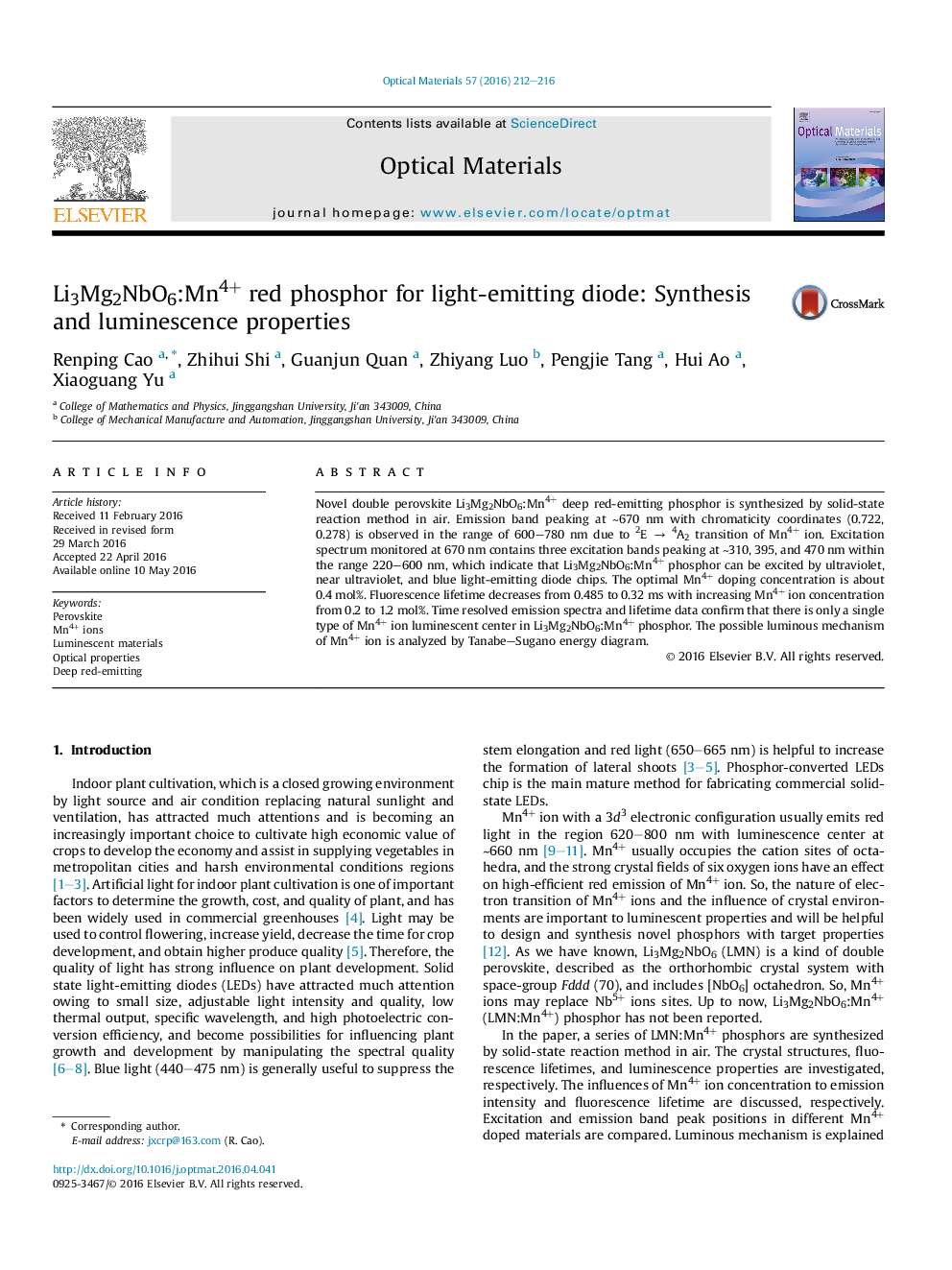| Article ID | Journal | Published Year | Pages | File Type |
|---|---|---|---|---|
| 1493309 | Optical Materials | 2016 | 5 Pages |
•Novel double perovskite Li3Mg2NbO6:Mn4+ phosphor is synthesized by solid-state reaction method.•There is only a single type of Mn4+ ion luminescent center in Li3Mg2NbO6:Mn4+ phosphor.•PL band peaking at ∼670 nm is observed due to 2E → 4A2 transition of Mn4+ ion.•The luminous mechanism of Mn4+ ion is analyzed by Tanabe–Sugano energy diagram.
Novel double perovskite Li3Mg2NbO6:Mn4+ deep red-emitting phosphor is synthesized by solid-state reaction method in air. Emission band peaking at ∼670 nm with chromaticity coordinates (0.722, 0.278) is observed in the range of 600–780 nm due to 2E → 4A2 transition of Mn4+ ion. Excitation spectrum monitored at 670 nm contains three excitation bands peaking at ∼310, 395, and 470 nm within the range 220–600 nm, which indicate that Li3Mg2NbO6:Mn4+ phosphor can be excited by ultraviolet, near ultraviolet, and blue light-emitting diode chips. The optimal Mn4+ doping concentration is about 0.4 mol%. Fluorescence lifetime decreases from 0.485 to 0.32 ms with increasing Mn4+ ion concentration from 0.2 to 1.2 mol%. Time resolved emission spectra and lifetime data confirm that there is only a single type of Mn4+ ion luminescent center in Li3Mg2NbO6:Mn4+ phosphor. The possible luminous mechanism of Mn4+ ion is analyzed by Tanabe–Sugano energy diagram.
Graphical abstractPL spectra of LMN:Mn4+ phosphor at room temperature (λex = 310 nm), the CIE chromaticity diagram and chromaticity coordinates, its photographs in the daytime and under the 365 nm UV lamp.Figure optionsDownload full-size imageDownload high-quality image (194 K)Download as PowerPoint slide
